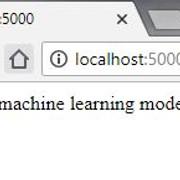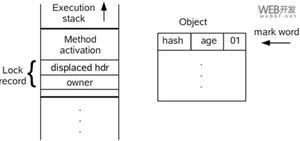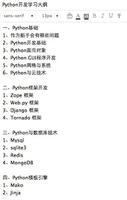机器学习:单元线性回归(python简单实现)

文章简介
使用python简单实现机器学习中单元线性回归算法。
算法目的
该算法核心目的是为了求出假设函数h中多个theta的值,使得代入数据集合中的每个x,求得的h(x)与每个数据集合中的y的差值的和最小。简单来说就是需要生成一个函数,它尽可能贴近实际数据中的每个值,方便我们预测。
核心算法
- 假设函数
即需要求的函数,为了简单在此只设置一个x对应一个y,求theta0和theta1
- 代价函数
目的是J最小,也就是每个y到达函数的距离之和最小。
- 批量梯度下降函数
带假设函数和代价函数带入到下降函数中可得
算法实现
import numpy as npimport matplotlib.pyplot as plt
def hypoFunction(x, theta):
h = np.dot(x, theta)
return h
def costFunction(h, y):
"""
代价函数
h:hypothesis,
theta:特征向量系数
y:特征值对应的实际值
"""
m = len(y)
J = 1 / (2 * m) * np.sum(np.power(h - y, 2))
return J
def gradientDecent(x, y, h, theta, alpha, number):
"""梯度下降函数
number:设置的梯度下降次数"""
# for i in range(number):
m = len(y)
n = len(theta)
J_history = np.zeros((number,1))
for i in range(number):
theta = theta - (alpha/m) * x.T.dot(h-y)
h = hypoFunction(x, theta)
J_history[i] = costFunction(h,y)
print(theta)
return h
def paint(x,y,hypothesis):
plt.plot(x,y,"ro")
plt.plot(x,hypothesis)
plt.show()
def main():
x = np.array([[1,1], [1,2], [1,3], [1,4], [1,5], [1,6]])
y = np.array([[1], [2], [3], [4], [5], [6]])
theta = np.array([[10],[0]])
alpha = 0.1
h = hypoFunction(x, theta)
J = costFunction(h, y)
h= gradientDecent(x, y, h, theta, alpha, 20000)
x = x[:,-1]
print(x)
paint(x,y,h)
pass
if __name__ == "__main__":
main()
简单解释
- 因为设置了两个theta,为了方便运算以及满足矩阵乘法的要求,所以x多添加了一列1。
- theta初始值可以任意设置。
- alpha大小初始值不要过大,否则有可能导致梯度下降函数不收敛。如果初始值过小,则会导致需要计算很多次才能达到全局最优解。
以上是 机器学习:单元线性回归(python简单实现) 的全部内容, 来源链接: utcz.com/z/387480.html









